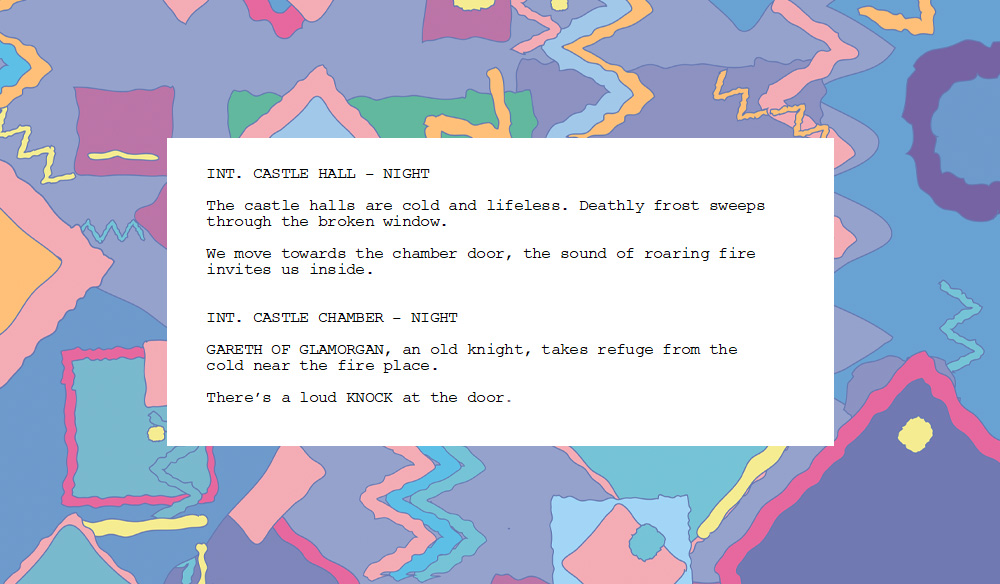If you’ve spent recent months secluded in your room, crafting your next screenplay with the hope that ‘this is the one,‘ the last feedback you want is a reader struggling to get through your work because of overwriting. It’s particularly disheartening if they find it dense within the first ten pages — often the most critical section of any screenplay.
So, how can you create a screenplay that flows like a freshwater river, both in movement and freshness? The key lies in the fluidity of information. If each scene unfolds in a way that informs, entertains, and propels the plot forward seamlessly, you’re on the right track. However, if it’s overwritten, readers are likely to lose interest quickly.
What Does Overwriting Look Like?
Overwriting can look something like this.
Why should you avoid overwriting? Primarily, remember that a screenplay isn’t a novel; it’s a blueprint for the production team. While it’s true we all have a general idea of what a castle hall looks like, variations in visualization are expected. However, the essence of a castle’s appearance is commonly understood. It’s the job of the production designer to enrich the scene with necessary elements, the location manager to select the ideal castle for filming, and the VFX supervisor to enhance scenes with specific effects like frost particles. Therefore, beyond essential details needed to establish a location, delving into minute scene particulars isn’t necessary.
Conversely, there may be certain situations where you are required to write about small details of the scene. For example, if you are writing about the Welsh ruler, Owain Glyndŵr, and his revolt against the English with the Battle of Mynydd Hyddgen, which took place on the slopes of Pumlumon, you may want to add details about the mountains of Pumlumon as the majority of readers aren’t going to be too sure what the hills of 15th century Wales and 15th century Welsh Knights would look like.
Going back to our first scene, we would just write:
Pacing Is Key
Enable the reader’s imagination, and here’s why: extensive description, scene after scene, action after action, page after page, significantly slows down the story. Among the key elements required to captivate a reader, pacing stands out as one of the most crucial.
Even though your film’s pacing will be determined in the editing room, the actual pace of your screenplay is going to be determined by the way you write.
Denny Martin Flinn, the author of How Not To Write Your Screenplay has this rule:
Here is an excellent rule to follow (like all rules, it’s meant to be broken but like all rules, follow it before you decide that you have a good reason to stray): Go through your screenplay. Take every piece of static description, and reduce it to one sentence. Work on that sentence until it gives the facts and the images you want. Limit your description
For more on storytelling, check out these articles:



